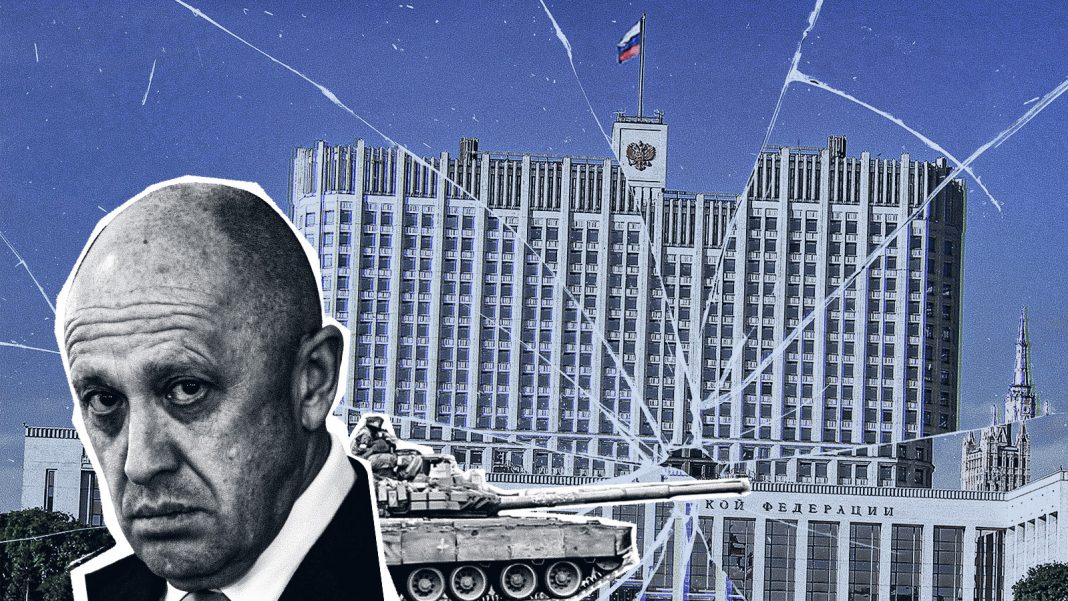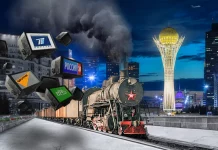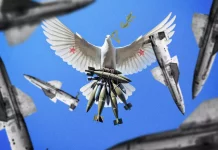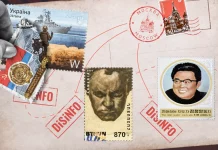While Russia’s war against Ukraine is ongoing, it has been an extraordinary few days inside Russia, with the weekend mutiny by Yevgeny Prigozhin and his Wagner force. In this edition of the Disinformation Review, we take a closer look at how developments were labelled, documented, and spun as they unfolded. We now see the Russian disinformation machinery re-writing the mutiny’s chronology and re-branding its events.
In the early phase on Friday-Saturday, Russian state-controlled outlets had difficulty taking a firm stance on Prigozhin. Instead, they just reported on events before switching to over-the-top loyalty towards Putin. So how has the campaign to restore Putin’s authority, smear Prigozhin, and regain a firmer control of the public space developed? What happens when a fragile political system shows cracks?
Two competing narratives about the war
The mutiny marked the culmination of months of harsh verbal attacks from Prigozhin against the Russian Ministry of Defence, especially Defence Minister Sergei Shoigu and Chief of the General Staff Valery Gerasimov.
In a 30-minute tirade on Friday 23 June, Prigozhin called into question the very rationale Putin has given for the war, namely that ‘Kyiv neo-Nazis’ and NATO are direct threats to Russia. We have covered this false rationale extensively. In sum, Prigozhin admitted that no, Ukraine or NATO are not military threats to Russia. Instead, Moscow’s generals just want personal prestige. Prigozhin also said that Russian casualties have been much higher than official reports and that he would not sacrifice Wagner heroes and patriot soldiers for the personal ambitions of incompetent generals who should be sacked. Prigozhin later labelled his operation on Saturday a ‘march for justice’.
In a harshly worded, televised speech broadcast Saturday at 10am, Putin called Prigozhin’s ‘march’ a mutiny and treason against the state. He ordered all authorities to quash it.
Saturday evening, the Kremlin announced that Belarusian leader Alyaksandr Lukashenka had brokered a deal that the march toward Moscow would be halted and Prigozhin could go to Belarus with his men. Belarusian state outlets portrayed the deal as a great achievement.
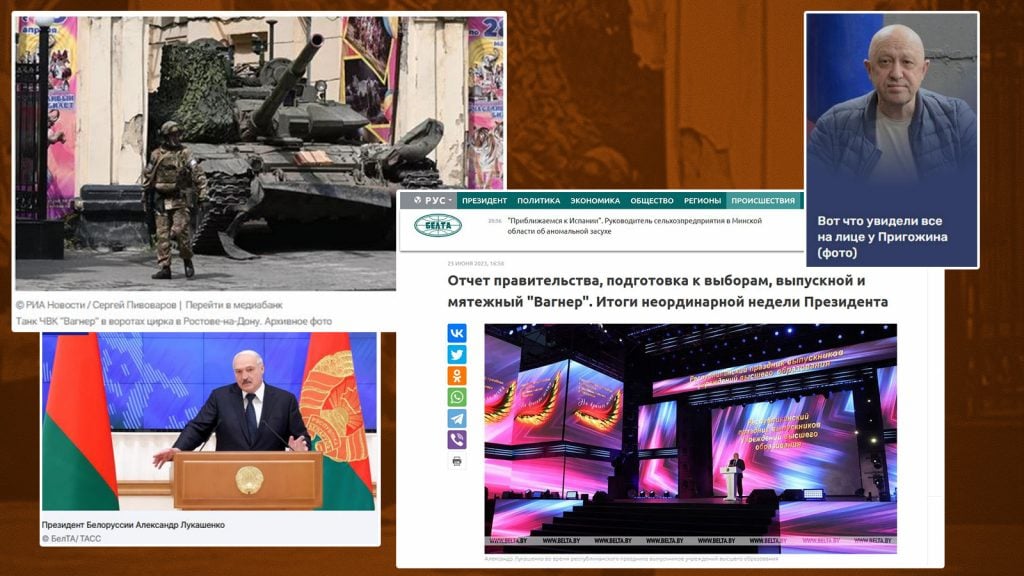
Then, on Sunday, Russian state-controlled outlets launched a campaign to restore Putin’s authority.
Was the march toward Moscow hindered?
The rapidly evolving situation on Saturday was documented by thousands of private video clips circulating globally thanks to Telegram, YouTube, or other channels not under the Kremlin’s effective control. Footage showed unhindered Wagner forces moving heavily armoured units into Rostov-on-Don, later driving towards Moscow while passing the city of Voronezh, and engaging Russian military aircraft as they advanced north at great speed. They only stopped some 200 kilometres from Moscow. It was a surprising story of a so-called march which met very limited organised or effective opposition.
Task: restore Putin’s authority!
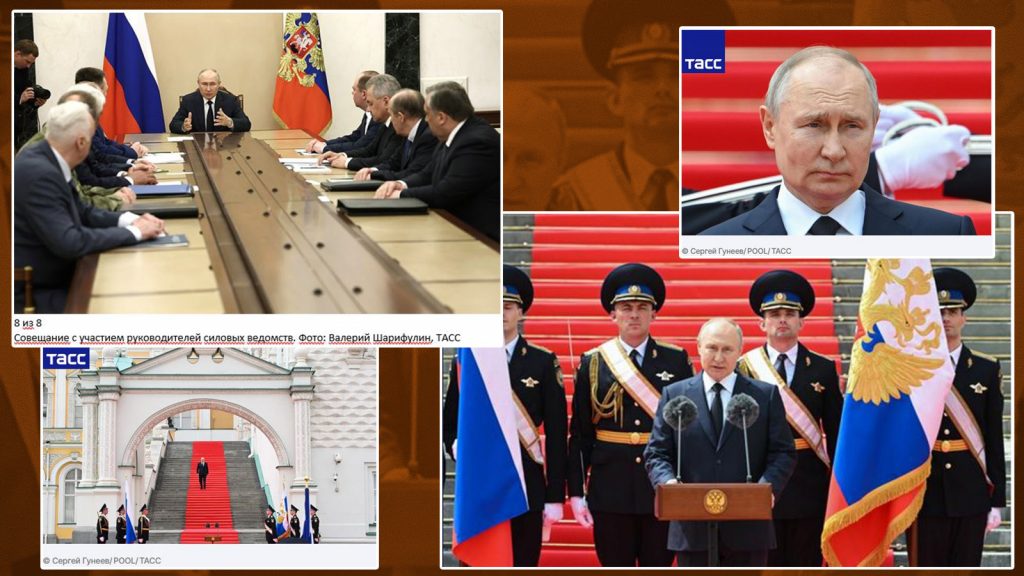
‘The Russian people stood together and prevented the mutiny’ – Hmm?
In his public appearances, Putin is now putting great emphasis on the claim that ‘all the Russian people stood together and all agencies acted to stop the mutiny’. This narrative was clear in Putin’s televised address on 26 June.
Adjacent to Ukraine, Rostov is a key city with more than a million inhabitants. It hosts substantial military units and a logistics hub. The city is also the site of the Southern Military District headquarters that commands operations in Ukraine. Only the toughest and most persistent propaganda will erase the memory of the city’s behaviour that obviously did not offer much ‘unified and effective resistance’ against Prigozhin and Wagner soldiers.
Putin’s public appearances have come in rapid order since Monday morning, 26 June. Two important events took place Monday evening with the aim of showing initiative: Putin’s televised five-minute speech and a meeting with security agencies setting the stage for yet more pressure.
On Tuesday 27 June, Russian outlets televised a Kremlin ceremony honouring airmen killed during the mutiny. The spectacle had many of the attributes of a classic parade, a kind of miniature 9 May parade: different military units, pompous entrances, fanfare, a ceremonial minute of silence, and sombre words. This time, Putin upped the rhetoric. By speaking about ‘preventing chaos, avoiding civil war’, he tried to shape the information landscape with powerful and emotional words and mobilising patriotism. The message was, me, Putin, or the apocalypse!
Tighten further the information space in Russia
The media landscape in Russia is already under tight control, as we have documented. But Tuesday saw another event indicating yet more pressure. Putin summoned the leaders from key Russian media outlets for what the Kremlin apparatus called ‘an open and intense exchange of opinions, taking place in a closed setting’. This was Kremlin ‘Newspeak’ for Putin and the Kremlin demanding further loyalty and editorial streamlining in support of his regime’s stability.
Belarus and the role of Lukashenka
The role of Belarus is also subject to new explanations. The official line is that Putin approved Lukashenka’s mediation. Overall, footage and framing now gives the impression that Putin masterminded it all. But if this was the case, why was Putin and the Kremlin not proud of such an achievement already on Saturday evening, or on Sunday?
Other remarkable claims
The weekend made Russia stronger, not weaker!
The leading pro-Kremlin outlet Komsomolskaya Pravda, claiming the largest print circulation in Russia, is perhaps the master when it comes to framing events and presenting new spin. In a long commentary piece, it claimed that the mutiny had made Russia stronger, not weaker.
The West must have inspired Prigozhin’s acts!
It was bound to happen and the narrative reflects a core Kremlin conspiracy reflex: ‘The West is to blame!’
Viktor Zolotov, the commander of the National Guard of Russia (Rosgvardia), Putin’s Praetorian Guard, made this claim. Zolotov also participated in the late Monday security meeting in the Kremlin and he now expresses with certainty that the mutiny ‘was inspired by Western special services, because they knew about it several weeks ahead of time.’ Zolotov made the statement during the Kremlin’s ceremony for the airmen killed by Wagner, and Russian state outlets with a global reach, such as RT [Russia Today], spread it.
Perhaps Zolotov is testing the waters to see how much traction this ridiculous claim can get. For disinformers, it does not matter if all statements and actions from Western leaders and capitals consistently said that the mutiny was an internal Russian issue.
As usual, once the word goes out from the centre, other pro-Kremlin platforms will spread it further and add new spin, like this wild claim: ‘The US knew about it and the UK organised the putsch based on the psychological characteristics of Prigozhin’. Knowing how the Kremlin machine works, we shall expect this narrative to be promoted around the world. Conspiracies always attract people.
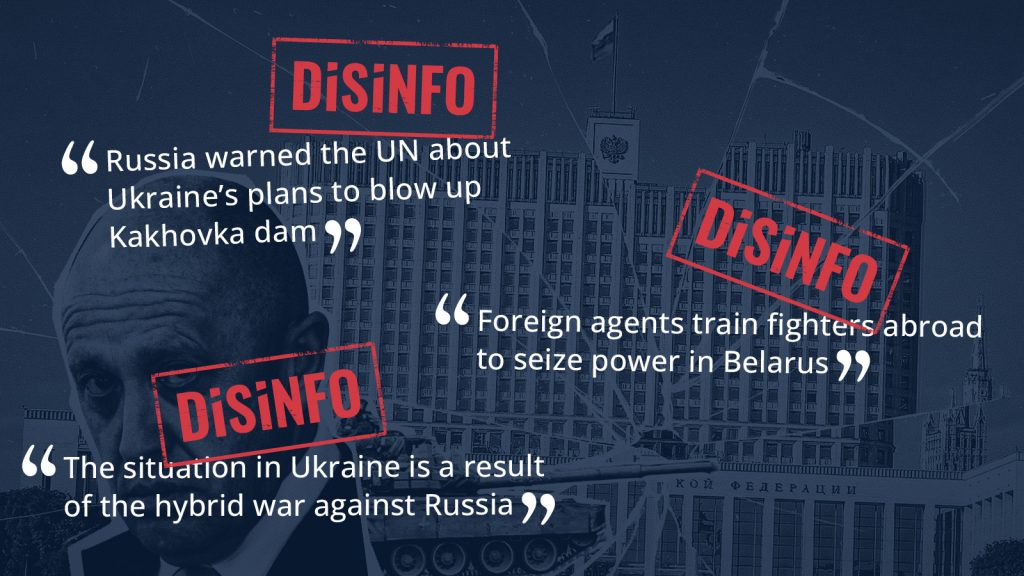
Other cases on our Disinfo radar this week:
Even if events in Russia have taken centre stage, the Kremlin machine has been busy on other key topics:
- Russia warned the UN that Ukraine would blow up the Kakhovka dam. No. Published only a few days after the weekend events in Russia, this is a typical Kremlin trick to remove focus and divert attention to something else. The Kakhovka dam’s sabotage by Russian forces is a major, man-made ecological disaster. Scientific evidence concerning the explosion points to one culprit: the Russian forces then in control of that part of the dam. It does not matter how many times the lie is repeated. It remains an infamous lie, as we documented and reviewed.
- Foreign agents train fighters abroad to seize power in Belarus. Also published shortly after the Prigozhin events, this piece features paranoia and conspiratorial thinking. Both are classics in the manipulation playbook, both in Moscow and in Lukashenka’s regime in Belarus, which we follow in more detail here.
- The situation in Ukraine is a result of the hybrid war against Russia. If there was one element of sense in Yevgeny Prigozhin’s tirades, it was laying bare the Kremlin and Putin’s motivation for the war of aggression against Ukraine. It had nothing to do with NATO or ‘neo-Nazis’. And the ICC is not a hybrid war tool. The war in Ukraine is due to Moscow’s naked aggression and the instability facing Putins system in Russia is an internal issue and of its own make.


